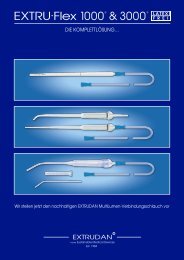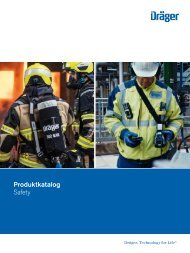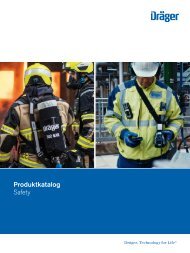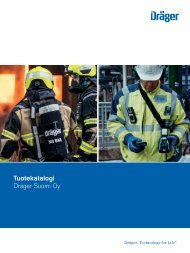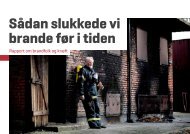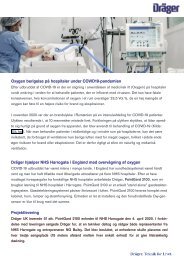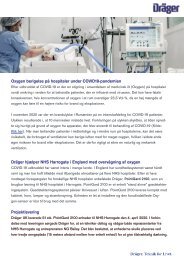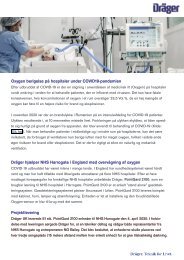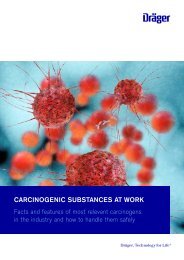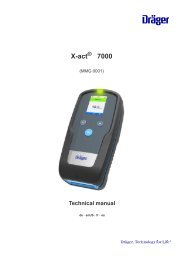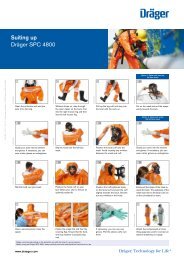Neonatal-Non-Invasive-Ventilation-NIV
Neonatal intensive care continues to be one of the most challenging fields in medicine. Fortunately years of experience from careful clinical observation, meticulous research and plenty of tender loving care have helped to significantly increase the chances of survival for our tiny patients. This booklet is an attempt to address the current development process of noninvasive ventilation therapies, both from a theoretical and a practical standpoint.
Neonatal intensive care continues to be one of the most challenging fields in medicine. Fortunately years of experience from careful clinical observation, meticulous research and plenty of tender loving care have helped to significantly increase the chances of survival for our tiny patients. This booklet is an attempt to address the current development process of noninvasive ventilation therapies, both from a theoretical and a practical standpoint.
Create successful ePaper yourself
Turn your PDF publications into a flip-book with our unique Google optimized e-Paper software.
32 I<br />
4. LITERATURE<br />
4. Literature<br />
1. Avery ME, Tooley WH, Keller JB, Hurd SS, Bryan MH, et al. Is chronic lung<br />
disease in low birth weight infants preventable? A survey of eight centers. Pediatrics.<br />
1987; 79: 26–30.<br />
2. Barrington KJ, Bull D, Finer NN. Randomized trial of nasal synchronized intermittent<br />
mandatory ventilation compared with continuous positive airway pressure<br />
after extubation of very low birth weight infants. Pediatrics 2001;107:638–41.<br />
3. Bartels DB, Wypij D, Wenzlaff P, Dammann O, Poets CF. Hospital volume and<br />
neonatal mortality among very low birth weight infants. Pediatrics. 2006;117:2206-<br />
14.<br />
4. Bassler D, Stoll BJ, Schmidt B, Asztalos EV, Roberts RS, Robertson CM, Sauve<br />
RS; Using a count of neonatal morbidities to predict poor outcome in extremely<br />
low birth weight infants: added role of neonatal infection. Trial of Indomethacin<br />
Prophylaxis in Preterms Investigators. Pediatrics. 2009; 123: 313-8.<br />
5. Claure N, Bancalari E. <strong>Non</strong>-invasive ventilation in premature infants. Arch Dis<br />
Child Fetal <strong>Neonatal</strong> Ed. 2015; 100: F2-3.<br />
6. Colaizy TT, Younis UM, Bell EF, Klein JM. Nasal high-frequency ventilation for<br />
premature infants. Acta Paediatr. 2008; 97: 1518-22.<br />
7. Collins CL, Barfield C, Horne RS, Davis PG. A comparison of nasal trauma in<br />
preterm infants extubated to either heated humidified high-flow nasal cannulae<br />
or nasal continuous positive airway pressure. Eur J Pediatr. 2014; 173: 181-6.<br />
8. Collins CL, Holberton JR, Barfield C, Davis PG. A randomized controlled trial to<br />
compare heated humidified high-flow nasal cannulae with nasal continuous positive<br />
airway pressure postextubation in premature infants. J Pediatr. 2013; 162:<br />
949-54.<br />
9. Courtney SE, Barrington KJ. Continuous positive airway pressure and noninvasive<br />
ventilation. Clin Perinatol. 2007; 34: 73-92.<br />
10. Czernik C, Schmalisch G, Bührer C, Proquitté H. Weaning of neonates from<br />
mechanical ventilation by use of nasopharyngeal high-frequency oscillatory ventilation:<br />
a preliminary study. J Matern Fetal <strong>Neonatal</strong> Med. 2012;25:374-8.<br />
11. Dargaville PA, Aiyappan A, De Paoli AG, Dalton RG, Kuschel CA, Kamlin CO, Orsini<br />
F, Carlin JB, Davis PG. Continuous positive airway pressure failure in preterm<br />
infants: incidence, predictors and consequences. Neonatology.2013;104:8-14.<br />
12. Davis PG, Morley CJ, Owen LS. <strong>Non</strong>-invasive respiratory support of preterm neonates<br />
with respiratory distress: continuous positive airway pressure and nasal<br />
intermittent positive pressure ventilation. Semin Fetal <strong>Neonatal</strong> Med. 2009;14:14-<br />
20.




